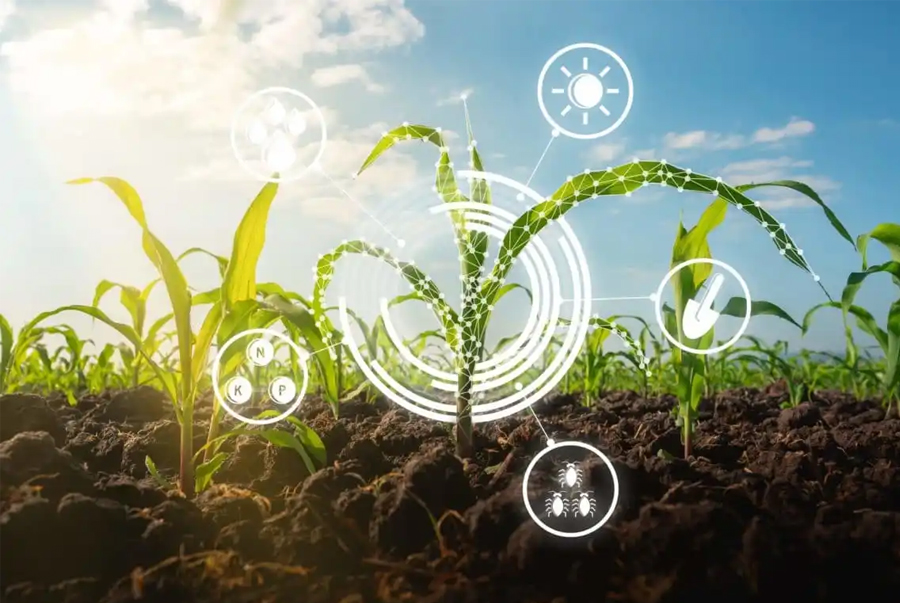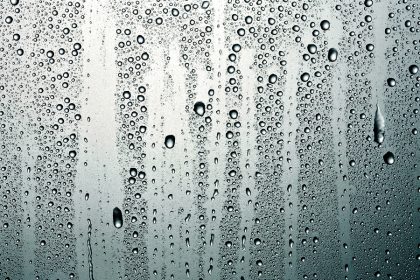Yes, readers we can achieve a lot without looking towards Government because Agriculture is a private business. If we believe in ourselves. we are only few steps hanged back our glorious success.
As explained in the previous blog, DigiAg is robustly based on Artificial Intelligence (AI) but its role in agriculture is much bigger than what have been described in DigiAg. Artificial Intelligence, ML, and IoT sensors will increase agricultural efficiencies that will eventually result in improved crop yields and reduced food production costs to the extent which is currently difficult to comprehend. The technologies are already showing potential to reduce the gap between current food production and additional 30-40% increase required for predicted population growth of 2 billion in 2050.
Through AI and ML, it is possible to gain insight across a large farming area of hundreds of acres to know how weather, seasonal sunlight, migratory patterns of animals, birds, insects, use of specialized fertilizers, and insecticides, planting and irrigation cycles affects yield which is dependent on DATA. Thus, the farmers who work with agricultural development companies are doubling down on data-centric approaches and expanding the scope and scale of how they use AI and ML to improve agricultural yields and quality. However, due to lack of in-depth understanding of data, AI and ML technologies, farmers are not convinced.
They think that companies are fooling them using their ignorance and illiteracy with the objective to get whatever data and information they want to be used in their own programs and products which later on, they force us to use without any compensation. Wow
It is for the companies to correct this perception and is equally important for those who promote these companies through mis-informing the poor farmers. The prime responsibility of these promotors should be to let the farmers know the reality (if they themselves knows) and let them decide what is right for them.
Louis Columbus: a graduate of Stanford School of Business, explained in detail how AI and ML can be used to improve agriculture. For example,
Surveillance systems based on AI and ML can monitor real-time video of the field through which, animal and/or human breaches can be identified which can send immediate alert to the farmers to save crops. This is specifically important for farms located in remote areas where chances of domestic and wild animals to destroy crops, break-in or burglary are maximum. (This is a perfect system to be used as and when agriculture is extended in Baluchistan),
AI and ML can improv and predict crop yield through visual analytics which is a simultaneous data transformation, mapping, contribution, selection, ranking, interaction, model visualization and knowledge processing for data received from drones. This data can be combined with real-time on ground sensor’s data of moisture, fertilizer, and natural nutrient levels to analyze growth patterns for each crop over time. (Big landlords and progressive farmers especially the cotton grower can use this technique to predict their yield for making their business strategy),
Yield mapping (technique of using GPS data to analyze variables such as crop yield and moisture content in a given field) is possible through supervised ML algorithms that can find patterns in large-scale data sets to identify and understand one single factor which if changed without affecting others can produced significant effect on yield (much like regression analysis of small farms data). This one single factor is extremely important through which it is possible to know the potential yield of a given field before the cycle is ever started. (This can help progressive farmers for making their business strategy and Government for crop forecasting),
The United Nations, international agencies and some companies initiated large-scale agricultural operations that are using drone data combined with on-ground sensors data to improve pest management. For example,
Greeneye has developed an AI based proprietary selective spraying system (PSSS) that can turn every sprayer into a smart machine. PSSS system can detect weeds and spray them precisely in real-time, reducing up to 90% of herbicide usage. It can be customized to any type of row crops wide enough to be tilled or cultivated by agricultural machinery and can detect only weeds and control them without contaminating the soil. (Extremely useful for cotton and wheat crops in Pakistan if any of the progressive farmer get it manufactured and leverage it to different farming communities),
Roadblocks which traders and agricultural business supply companies have experienced during corona pandemic can be easily managed using state-of-the-art track-and-trace system. They rely on advanced sensors that can have access to knowledge of each shipment’s conditions thereby providing greater visibility and control across all types of agricultural supply chains that are of vital importance during any kind of emergencies. (Pakistan has faced this challenge during NATO supply going to Afghanistan and still facing during transit trade between Afghanistan and other countries and can manage it with the help of NATO and other UN agencies),
AI and ML provide the best option to have the right mix of biodegradable pesticides and its application to the target areas selected in the field to reduce the chances of pests spreading further and infecting healthy crops. Such targeted areas can be identified using appropriate sensors whose data can be combined with visual data collected from drones to detect various pest infected areas in the large fields. This is one of the most common uses of AI in agriculture which can help reducing costs while increasing yields. (Cotton growers in Pakistan can use this if wished so),
Understanding yield rates of crops is necessary for price forecasting which can be helpful for farmers in negotiating the best possible price for their harvests. For example, if price of a commodity rises by 20% and its demand falls by 50%, the price elasticity for demand (PED) will be equal to -2.5 indicating thereby that the commodity is sensitive to price increase. In this case, the sale of the product would be reduced and will give room to the famers for making export strategies. Conversely, the prices will have to be reduce significantly to get positive value for PED for increasing domestic sale. But occasionally, domestic demand increases despite many fold increase in prices like the situations we witnessed every RAMADAN. It is at this point that the farmer has to made decision what is in his favor, domestic consumption, or export? However, if the demand for a product increases by 15% in response to a 10% reduction in price, the value for PED would be 1.5 which mean that the product is said to be elastic. In agriculture, such elasticity or pricing strategy is dependent on yield predications. If yields rates are higher, part of the crop can be exported and if the yield rates are low, PED value can be increased to fulfill domestic consumption. (Sugar and wheat grower in Pakistan can use this strategy for increasing their revenue without any manipulation),
Unmanned trans-planter, harvester, intelligent irrigation control system and leaf age diagnostic techniques are being used extensively in production bases of China where data and information regarding environmental factors, soil fertility and crop growth at different stages is also collected.
The technology is so successful that it helped Chinese coping with three typhoons by getting per unit yield higher than the year preceding typhoons.
Pakistan can benefit from such inventions to boost her agricultural productivity. China is also encouraging the use of big data, artificial intelligence, remote intelligent agricultural machinery, and agricultural drones in rural areas as a part of her efforts to advance agricultural modernization which has played significant role in poverty reduction in China. Pakistan can very easily learn from these technologies if desired so to modernize her villages: the hub of agricultural activities in the country for increasing her production base many folds to get rid of poverty and food imports which has unprecedently increased during current years,
SupPlant is AI based platform for real-time farm monitoring and data analytics for irrigation planning and management. It provides an integrated hardware (comprising sensors for measuring hydration) and software for real-time monitoring of plants and data analytics. The data thus collected enter into cloud and gets analyzed for the water requirement of plants which can be provided automatically through remotely controlled processes. Soil and climatic data can also be integrated into this platform. (Sup Plant like platform is a must for Pakistan due to extreme scarcity of irrigation water. Big landlord and progressive famers can take initiative in this direction),
So dear readers, you may now have understood the real meaning of
Where there is a will there is a way
There are several ways to boost agricultural production, reducing poverty and food import provided we wished to do so but,
James Dargie: Former Director, Joint FAO/IAEA Division of Nuclear Techniques in Food and Agriculture says,
The key lies in empowering the millions of smallholder producer and landless workers who form the backbone of rural economies in most developing countries to grow their incomes and improve their livelihood by raising agricultural productivity and engaging in markets”
And this is what I also believe in
What do you believe in? Please let me know through your comments.
See you next week, Bye.





